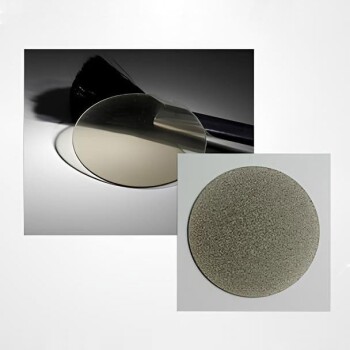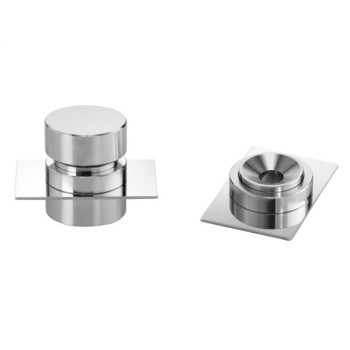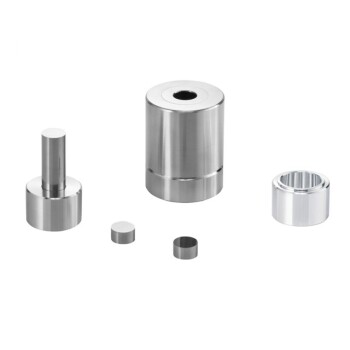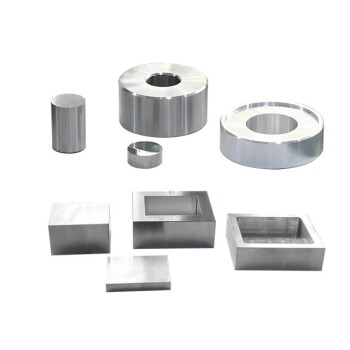At their core, lab-grown diamonds are not imitations. They are genuine diamonds, possessing the exact same chemical, physical, and optical properties as those mined from the earth. They share the identical carbon crystal structure, resulting in the same hardness, brilliance, and fire. The single defining difference is not their substance, but their origin.
The most critical characteristic of a lab-grown diamond is that it is chemically and structurally identical to a natural diamond. All other differences—from its potential for high purity to its ethical sourcing—stem directly from its creation in a controlled, man-made environment rather than a geological one.
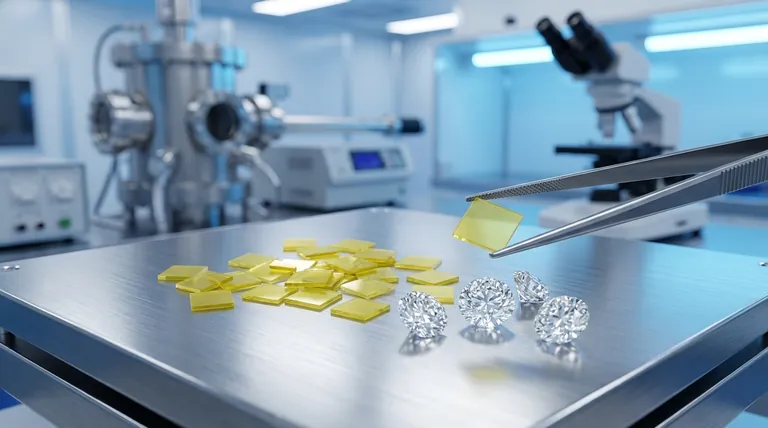
Identical in Every Physical Way
To be clear, a lab-grown diamond is not a "fake" diamond like a cubic zirconia. It is chemically pure carbon, just like its natural counterpart. This shared identity dictates its core physical traits.
The Same Chemical Blueprint
A lab-grown diamond is made of pure carbon arranged in a rigid cubic crystal lattice. This is the exact same atomic structure that gives a natural diamond its renowned properties.
Identical Optical Properties
Because the crystal structure is the same, light behaves in the exact same way when passing through a lab-grown diamond. This means it exhibits the same brilliance (sparkle), fire (flashes of color), and scintillation (play of light) as a mined diamond. To the naked eye, they are indistinguishable.
Unmatched Hardness
A lab diamond registers a 10 on the Mohs scale of hardness, the highest possible rating. This makes it just as durable and resistant to scratching as a natural diamond, suitable for everyday wear in any piece of jewelry.
The Impact of a Controlled Origin
While physically identical, the controlled environment in which lab diamonds are grown imparts several unique characteristics that set them apart from diamonds formed under chaotic geological pressure.
Potential for High Purity
The manufacturing process can be precisely controlled, which often results in diamonds with exceptional clarity and color. It is common to find lab-grown diamonds with very few inclusions and a colorless grade (D, E, or F), making them appear exceptionally transparent.
Distinct Internal Markers
The rapid crystal growth in a lab can leave behind subtle markers that are different from the imperfections found in natural stones. While often invisible without magnification, these unique growth patterns and metallic inclusions are what allow gemological labs to positively identify a diamond as lab-grown.
Ethical and Environmental Certainty
Because they are created in a secure laboratory setting, lab-grown diamonds are inherently conflict-free and ethically sourced. Their origin is fully traceable, which provides a level of certainty that can be difficult to achieve with mined diamonds.
Understanding the Nuances
Choosing a lab-grown diamond involves recognizing a few key distinctions that are less about physical properties and more about context and perception.
Rarity vs. Technology
A natural diamond's value is tied to its geological rarity—a finite resource formed over billions of years. A lab-grown diamond's value is a product of technology and energy. While it is still a complex and expensive process to create one, they are not considered rare in the same way.
Identification is Possible
While you cannot tell the difference between a lab and natural diamond by looking at it, they are not indistinguishable. Gemologists with specialized equipment can detect the subtle differences in crystal growth and fluorescence to confirm a diamond's origin.
Making the Right Choice for Your Goal
Your decision between a lab-grown and a natural diamond depends entirely on which characteristics you value most.
- If your primary focus is visual perfection and budget: Lab-grown diamonds often provide a higher quality stone with better color and clarity for a significantly lower price point.
- If your primary focus is tradition and geological rarity: The billion-year history and finite supply of a natural diamond hold a unique and powerful story.
- If your primary focus is a verifiable ethical origin: A lab-grown diamond offers complete certainty that your stone is conflict-free with a more controlled environmental footprint.
Ultimately, understanding these core characteristics empowers you to choose the genuine diamond that aligns perfectly with your personal values.
Summary Table:
| Characteristic | Lab-Grown Diamond | Natural Diamond |
|---|---|---|
| Chemical Composition | Pure Carbon (C) | Pure Carbon (C) |
| Crystal Structure | Cubic Lattice | Cubic Lattice |
| Hardness (Mohs Scale) | 10 | 10 |
| Optical Properties | Identical Brilliance & Fire | Identical Brilliance & Fire |
| Origin | Controlled Laboratory | Geological Formation |
| Typical Clarity/Color | Often Higher Grades (e.g., D-F Color) | Varies Widely |
| Ethical Sourcing | Guaranteed Conflict-Free | Supply Chain Varies |
| Primary Value Driver | Technology & Cost | Geological Rarity |
Ready to find the perfect diamond for your needs? Whether you're a jeweler seeking high-quality, ethically sourced stones or a researcher requiring precise materials, KINTEK's expertise in lab equipment and consumables supports the entire lifecycle of advanced materials. Let us help you make an informed choice with confidence. Contact our specialists today to discuss how KINTEK can meet your laboratory and material needs!
Visual Guide
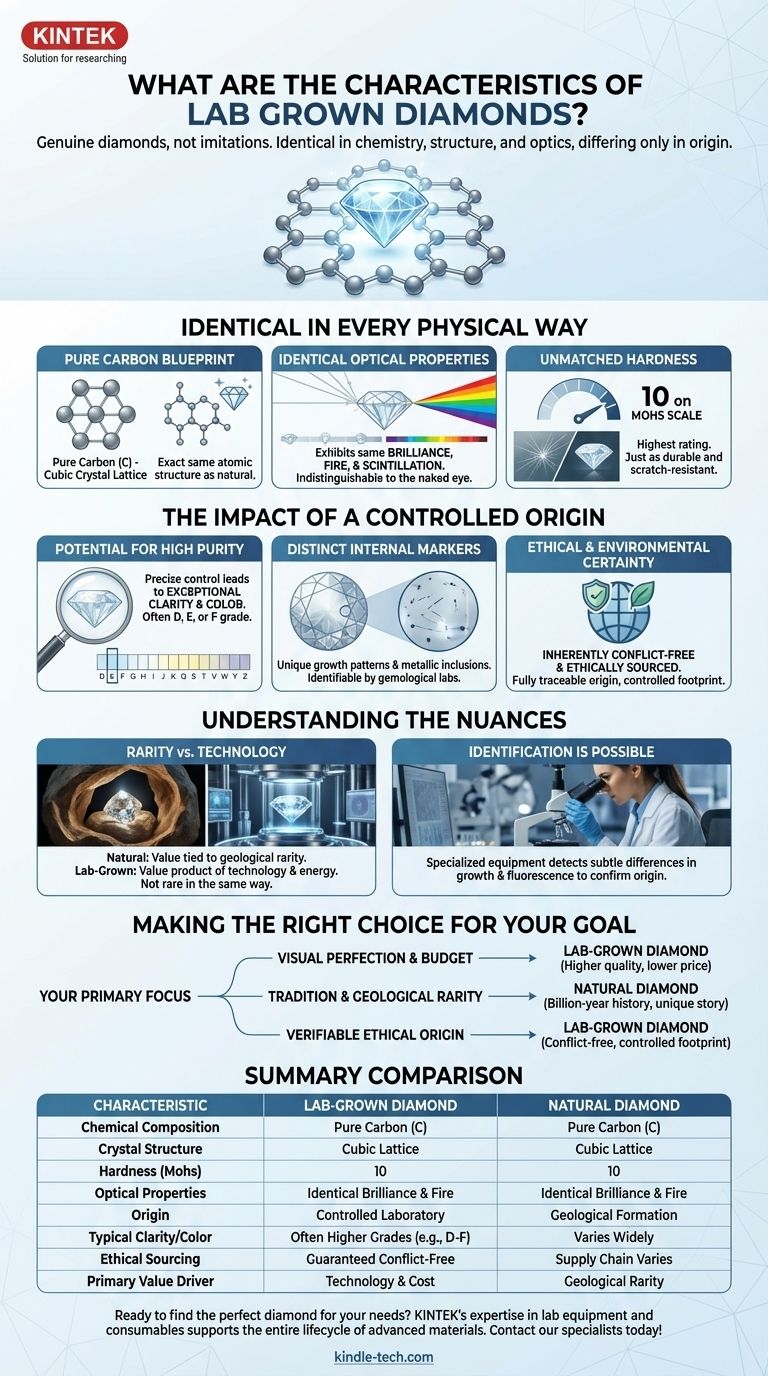
Related Products
- CVD Diamond for Thermal Management Applications
- Laboratory CVD Boron Doped Diamond Materials
- Cylindrical Resonator MPCVD Machine System Reactor for Microwave Plasma Chemical Vapor Deposition and Lab Diamond Growth
- CVD Diamond Domes for Industrial and Scientific Applications
- CVD Diamond Optical Windows for Lab Applications
People Also Ask
- What is the future of CVD diamond? Unlocking Next-Gen Electronics & Thermal Management
- What is the use of CVD diamond? Unlock Superior Performance in Extreme Applications
- What are the disadvantages of CVD diamonds? Understanding the trade-offs for your purchase.
- What is the main difference between CVD and natural diamond? Origin, Purity, and Value Explained
- Are lab-grown diamonds comparable to natural diamonds? Discover the Science Behind the Sparkle




